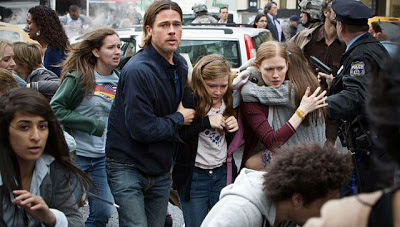Australian director, Justin Kurzel's feature film debut -- "Snowtown" (2011) is a fictional dramatization of real-life events. In the Southern part of Australia, from 1992 to 1999, a killing spree was carried out by a group of degenerate men led by their ringleader John Bunting. Most of the victims were known to Bunting and most of his victims were discovered stuffed into barrels in an abandoned bank in the small rural community of Snowtown. But, "Snowtown" is not an ordinary serial killer movie, where we have a charismatic Hannibal Lector like character. It has harsh dialogues and naturalistic environment, where a mood emerges that’s thick with childhood damage.
The film is set in the suburbs of Adelaide, where an atmosphere of desperate 1990s poverty and hopelessness is in the air. The housing projects presented here are a drab wasteland, which is as hard on the eye as it is hard on those that live there. Jamie (Lucas Pittaway) is a lovely and passive teenage boy. He lives with his detached mother, Elizabeth (Louise Harris) and with three brothers. Jamie becomes the victim of the poor choices made by his unhappy single mother. Along with the atmosphere of poverty, he is molested by his mother’s boyfriend/neighbor and also raped by his older half-brother.
Bright-eyed and bearded, John Bunting (Daniel Henshall) makes his entrance and scares away the local paedo creep from Elizabeth's three sons. Bunting cooks breakfast for boys, keeps them off drugs and settles down in the house like a dad. But, in the neighborhood-watch meetings, he indulges in grotesque and violent revenge fantasies. On one instance, he chops up some kangaroos and spill the bloody remains on the front door of Pedophile boyfriend. James participates in this willingly and later the residents of neighborhood embrace and allow his group to be their eyes.
Gradually and eventually, Bunting shows his true colors to James and his mother. His idea of who needs to be punished extends to anyone who bothers him in some way and he imagines himself as judge and executioner. When James collaborates with Bunting gang (he had a serial killer gang with at least three men), his descent into hell starts in frightening details.
Daniel Henshall who plays Bunting is the only pro actor in the cast. Henshall reveals acting of the highest caliber. He is repelling as well as compelling and this breakthrough performance has got to be one of the worst human beings ever portrayed on-screen. Pittaway, with an consistent stoic expression on his face, is superbly believable as the bloated killer. The rest of the supporting cast (mostly unknowns and amateurs) picked by director Kurzel delivers intensely naturalistic performances.
Adam Arkapow's grim cinematography ("Animal Kingdom") portrays the locality as a grinding, oppressive and essentially lawless circle of hell. Kurzel's direction and Grant's script takes a honest approach, where they simply stand back and observe the behavior. They allow a viewer to draw his/her own conclusions as to root causes. Still, in the end, when murders pile up, the directorial detachment offers very less in the way of insights.
For a serial killer movie, there aren't many gore and violent scenes since the narrative searches for psychological detail rather than big dramatic moments. Yet, the violence and abuse that exist are definitely daunting enough. "Snowtown" is a brilliantly directed nightmare that has the power to leave one perturbed.
Trailer
Snowtown -- IMDb
Snowtown Murders -- Wikipedia
has the power to leave one rattled
consistently stoic expression on his face
embrace him and allow him and his group
idea
of taking revenge against that pedophile boyfriend, for instance, is to
chop up some kangaroos and spill the bloody remains on his front door -
See more at:
http://www.slantmagazine.com/film/review/the-snowtown-murders/6070#sthash.lfzZChMn.dpuf
a fictional dramatization of real-life events
a fictional dramatization of real-life events
Justin Kurzel's
Justin Kurzel's
Justin Kurzel's
Justin Kurzel's
Justin Kurzel's
Justin Kurzel's
Justin Kurzel's




















